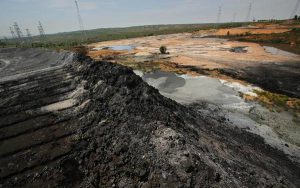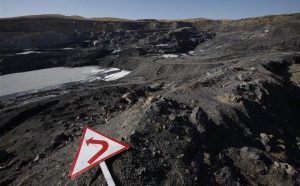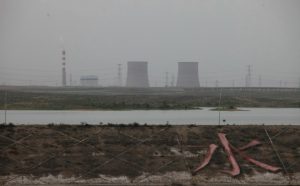Zhang Chun (ZC): What’s your view on CTG in China and its future prospects?
Chi-Jen Yang (CY): China’s approach to CTG is replicating the mistakes America made, but on a larger scale. Fifty different projects have sprung up in the last few years and the risks are huge – basically they’re on a road to mass bankruptcy. At a recent CTG conference I described this as “hundreds of billions invested, hundreds of billions lost.”
America has a single CTG plant, Great Plains Synfuels. China has always regarded that as a successful case study, but in fact it has been a complete failure. It was built when the US thought oil prices would continue to rise and that, as domestic extraction has reached a peak, natural gas prices would also.
So construction started on the facility in 1980, it went into production in 1984, and in 1985 it went bust. The federal government took it over and then sold it off at a rock-bottom price to Basin Electric. The Department of Energy, which had underwritten the project, lost a billion dollars. The small profits that Basin Electric has made over the following 20 years are due to the investments made by the original investors and government compensation – it didn’t have to pay the costs of construction.
Basin Electric also had to invest in environmental protection – waste gases from the plant were only brought into compliance with standards after 10 years, and there have been complaints about foul smells for 20 years. And it’s a water-hungry and inefficient facility.
These are all painful lessons to learn. But China doesn’t seem to understand this and is starting CTG projects en masse. State-owned power firm Datang’s project in Keqi in Inner Mongolia suffered an accident after only one month of operation and it still isn’t clear what went wrong, but the second phase of that facility is nearly complete. There’s been no time to adapt in response to that experience. It’s both very rushed and very dangerous.
And there are various types of coal, meaning that different types of technology have to be used in these coal-chemical projects. You can’t just copy the technology. These plants are meant to operate for decades – we should take the time to get them right.
ZC: China has a huge coal-chemical sector with a fairly long history. Does China have a technology advantage over the US?
CY: All we can say is that the technology is widely applied in China. China uses a wide range of coal-chemical products and it does have a lot of experience. But not advanced experience. For example second and third-tier cities in China are still using coal gas – only China still does that, nobody else uses it. China’s existing CTG facilities use the same technology but add in another stage, only developed in the last decade, to produce synthetic methane.
And the strength of technologies lies not in how good they are, but in how mature. In China it’s generally thought that CTG technology is mature. But in the US the coal-chemical industry has been operating for 30 years and still isn’t ideal, while China’s is just getting started. And the Datang facility in Keqi uses the same technology as Great Plains Synfuel, so I can’t see where the advantage is. There’s not enough operational experience and no mature technology.
In the US nuclear and wind power went through similar leaps forward, because as in this case everyone thought the individual technologies were ready and could just be combined. So lots of projects got under way. But various problems can arise in the system as a whole.
In the 1960s the US started large-scale expansion of nuclear power – they had mature electricity generation technology and mature reactor pile technology, so they thought that meant nuclear power was also a mature technology. And the power industry thought it was the future and that at larger plants costs would be lower. So nuclear power plants, which are actually more costly, were built one after another, bigger and bigger. It collapsed in 1975, when contracts for new nuclear power plants started to be cancelled and existing plants went bust. After building over 100 nuclear power plants the US finally admitted that the problem wasn’t that the plants were too small – it was that the technology wasn’t ready.
ZC: Aside from technology, what other CTG risks does China face?
CY: First is that China may encourage more natural gas extraction. China has a lot of natural gas potential.
Second is new energy. There’s been a lot of bankruptcies in the solar power sector, due to early over-optimism. But in the long term, large-scale solar power farms, rather than small operations will result in falling costs, which will be revolutionary. Once large-scale solar power farms have been built costs will match those of conventional power and everyone will prefer to build solar.
Cost of solar power halves every decade, so in another 20 years it’s going to be extremely widespread. This is within our lifetimes. At that point coal is likely be set aside on a large scale, never mind CTG.
Third is international trends. China thinks that CTG will, no matter what, be cheaper than buying in liquefied natural gas. But LNG prices are falling, because there’s so much production and the market is saturated.
LNG is mostly sourced from conventional gas. With conventional gas most of the costs of extraction are incurred at the drilling stage – after that, the gas just flows out, so marginal costs of production are very low. Even if the market is saturated, there’ll still be gas for sale as long as those marginal costs are covered.
LNG is expanding quickly, but there’s set to be a fierce price war. And if LNG prices have to fall to compete, what about CTG?
ZC: Some experts say China should have some CTG capacity for the sake of energy security. What do you think?
CY: You can’t achieve energy security by restricting energy imports.
America’s only successful energy security policy was the Oil Import Quota Program, which ruled that US oil imports could not account for more than 12.2% of domestic oil production. That was put in place by Eisenhower in 1959, but the outcome was by no means ideal.
Back then oil from the Middle East was plentiful and the oil market was in a slump, with very low prices. After the quota was implemented the US had a dual-price system for oil, with imports being cheaper than domestic oil. The high cost of domestic oil meant US citizens suffered and the pace of domestic oil extraction quickened. But the exhaustion of domestic oil reserves would have been a risk.
The dual-price system was unpopular and was abolished in April 1973. In October 1973 Middle Eastern oil exporters imposed an oil embargo – you didn’t want it when it was cheap, and now you can’t have any at all.
Energy security isn’t an issue of self-sufficiency. I think China’s route to energy security should be one of liberalisation of trade, of diversity, of decentralised imports. The US tried to restrict imports and it didn’t work. The US tried to make gas from coal, and that didn’t work either.
The US has recently moved towards energy self-sufficiency because of liberalisation – and this was also why the Great Plains Synfuel plant went bust.
In 1978 the US abolished price controls on natural gas, leading to falling prices. By 1987 natural gas prices were set entirely by the market. That led to more prospecting and research into technology, and as a result the US found itself with an ample supply of gas. There was no market or advantage for CTG production. Currently the US has the world’s most innovative and responsive natural gas market, marred only by price fluctuations.
China’s reserves of natural gas are still unknown and production is nowhere near a peak and continuing to increase – there is still huge potential.
But government development of CTG is also driven by employment concerns and cannot be suddenly halted. I can only hope that the investors in CTG will realise there is no money to be made and so no reason to risk their own funds.







